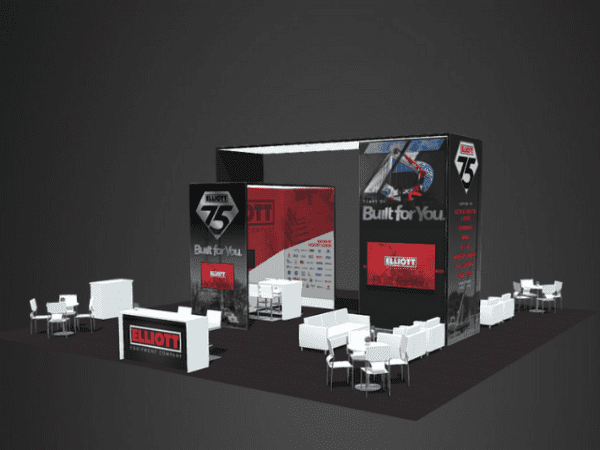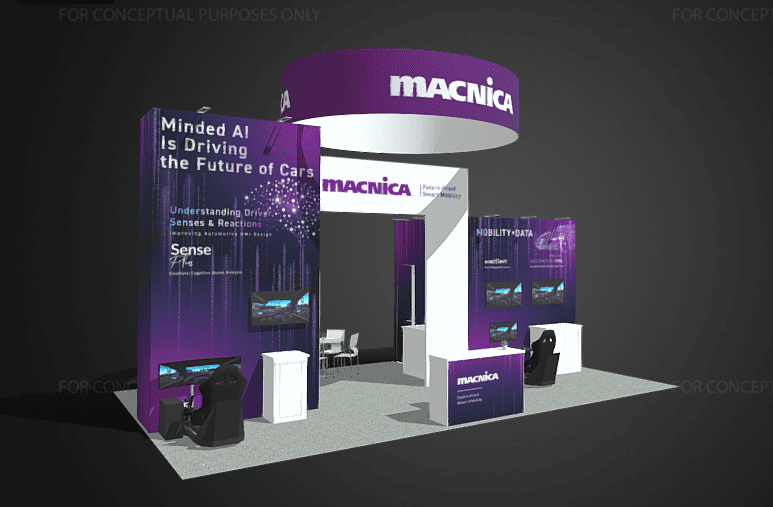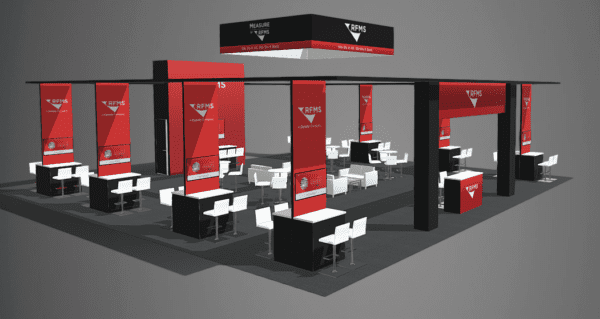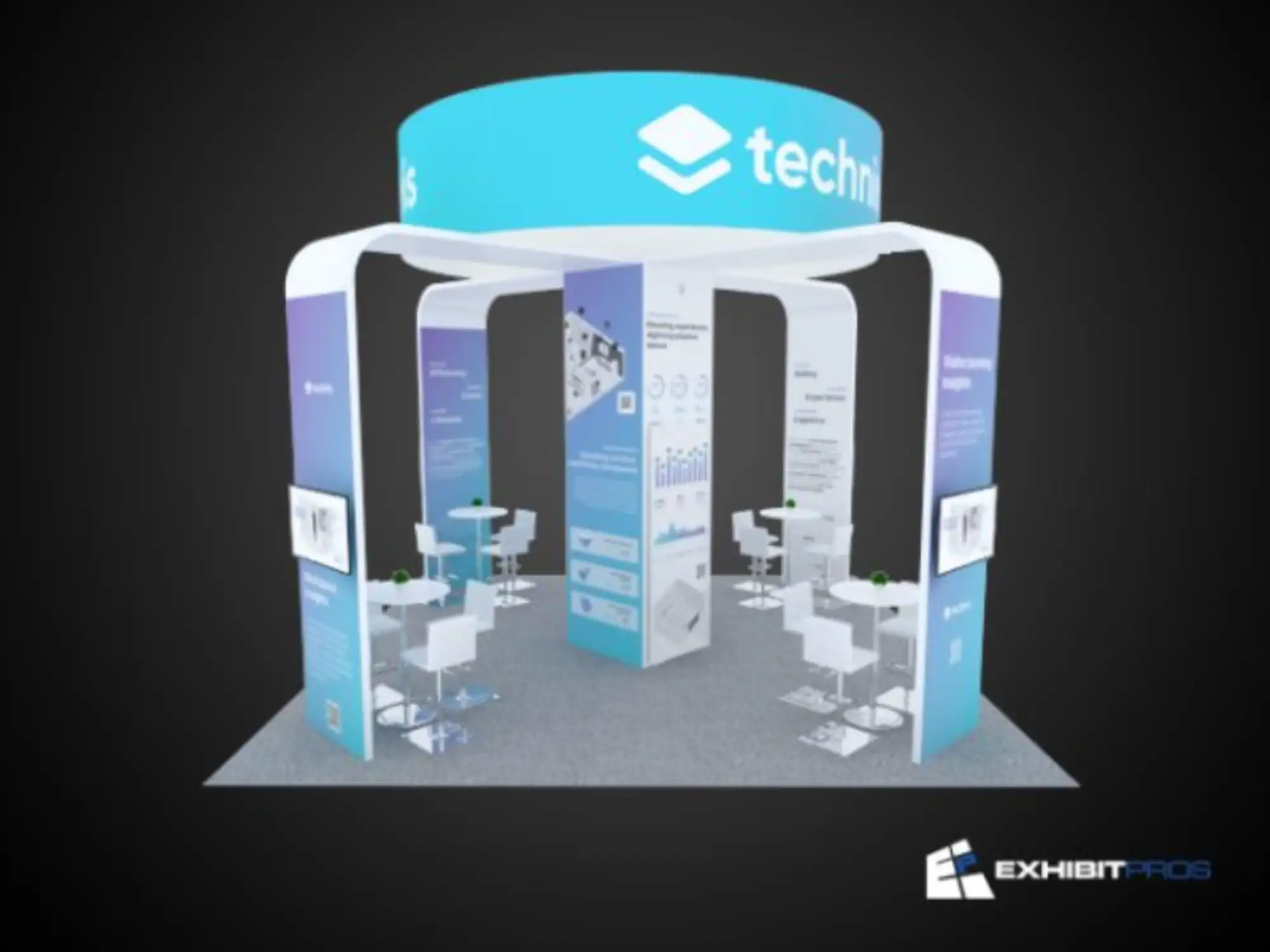Your Go-To Trade Show Checklist: From Planning To Execution
Preparing for a trade show can often feel overwhelming, especially if you’re aiming to make a significant impact on potential clients and industry peers. Having a comprehensive guide to navigate through the planning and execution phases can transform this challenging process into a manageable and even enjoyable task.
This trade show checklist will walk you through each step, from initial planning to the final execution, making sure you leave nothing to chance.
Early Stage Planning
Setting Objectives and Budgeting
The first step in your trade show preparation should involve setting clear objectives. What are your objectives for attending this trade show? Are you aiming to generate leads, boost brand recognition, unveil a new product, or build valuable industry connections?
Your goals will dictate every subsequent decision, from the design of your booth to the promotional materials you distribute. Once your objectives are set, it’s time to tackle the budget. Trade shows can be costly, so allocate your funds wisely.
For example, opting to rent a booth instead of purchasing one offers clear advantages such as flexibility in booth size and location, as well as reduced upfront investment and maintenance expenses. This approach allows for greater financial flexibility and strategic resource allocation.
Consider the costs of booth space, design and construction, travel and accommodations for staff, promotional materials, and any additional services you might need, like electricity or Wi-Fi. It’s also wise to set aside a contingency fund for unexpected expenses. Effective budgeting will help you maximize your presence without overspending.
Designing Your Booth
The design of your booth is crucial as it represents your brand’s physical presence at the trade show. It should attract attention and offer functional value. Consider the flow of traffic through your booth, how your products or services will be displayed, and how you will interact with attendees.
Your booth should be welcoming and reflect your brand’s image and values. Hiring professional designers or working with experienced contractors like Exhibit Pros can ensure your booth is both eye-catching and effective in delivering your marketing messages.
Staff Training and Pre-Show Marketing
Your staff represents your brand at the trade show, and their performance can greatly influence the outcome. Training is essential to ensure they are knowledgeable about your products or services, the goals of attending the trade show, and how to engage effectively with booth visitors. Role-playing different scenarios can prepare them for various types of interactions they might encounter.
Pre-show marketing is equally important. Begin by notifying your current clients and prospects about your participation in the trade show. Utilize email campaigns, social media, and even direct mail to spread the word.
You might want to offer special incentives, like a discount code or a gift, to encourage people to visit your booth. This phase is about building excitement and anticipation, drawing more traffic to your stand.
Logistics and Operations Management
As the trade show approaches, your attention should shift to logistics and operations. This involves coordinating the transportation of your booth materials, ensuring all items arrive on time, and confirming travel arrangements for your staff.
Check the condition of all display materials and technology beforehand to avoid last-minute hitches that could compromise your booth’s functionality.
It’s also important to familiarize yourself with the trade show venue. Understand the layout, identify where your booth is located, and note the locations of essentials like restrooms, food courts, and emergency exits. This knowledge will help in the setup process and enable you to guide visitors effectively during the event.
The Execution Phase
Setting Up at the Venue
Arriving early at the venue to set up your booth is advisable. This gives you ample time to organize your space, set up any technology or digital presentations, and make last-minute adjustments. It’s also a good time to network with other exhibitors. Understanding who is around you can provide opportunities for cross-promotion or partnerships.
Make sure every element of your booth is aligned with the goals you’ve set, creating a cohesive and inviting environment for attendees.
Mid-Event Adjustments and Networking
Once the trade show is underway, it’s vital to remain adaptable. Monitor the performance of your booth and staff, and be ready to make adjustments.
If certain aspects of your booth aren’t engaging visitors as expected, tweak your approach. Maybe you need to reposition your displays, or perhaps your staff needs to be more proactive in starting conversations.
Networking is another crucial component during the show. In addition to attracting visitors to your booth, trade shows are also about making connections within your industry. Attend seminars, participate in workshops, and engage with other exhibitors. These activities can lead to valuable insights and potential business opportunities.
Maximizing Day-of Event Dynamics
As the day progresses, staying proactive will help you leverage every opportunity the event has to offer. Continuously engage with the dynamic environment of the trade show floor.
Actively monitoring the flow of attendees and identifying peak times for foot traffic can provide valuable insights for real-time engagement strategies.
Engage your team in brief, periodic huddles to share quick updates, gather insights on visitor interactions, and adjust messaging or tactics as needed. These quick syncs can empower your staff to share what’s working or where they need support, keeping the team energized and effective throughout the event.
Additionally, keep an eye on competitor activities and industry trends showcased at the event; this can provide immediate feedback on your own strategies and help refine your approach not just for the current event, but for future shows as well.
Follow-Up and Analysis
Post-Show Follow-Up
The days immediately following a trade show are critical for capitalizing on the connections you made and the interest generated in your booth. Effective follow-up is what often differentiates successful exhibitors from those who just participate.
Start by organizing the contact information collected during the show, categorizing leads based on their potential and interest level.
Send personalized follow-up messages within a week of the event, ideally containing a reference to the conversation you had or the specific interest they expressed in your product or service. This personal touch helps reinforce the connection and significantly increases the chances of converting leads into customers.
Maintaining Momentum
While the immediate follow-up post-trade show is crucial, maintaining contact with leads over time is just as important. Develop a strategy for ongoing engagement through various channels such as newsletters, social media updates, and periodic check-ins.
This continued engagement helps keep your brand top-of-mind and can nurture leads through to conversion, even if they were not initially ready to make a purchase.
Analyzing Trade Show Performance
Evaluating your performance after the trade show is essential to understand the return on investment and identify areas for improvement. Gather feedback from your staff about what worked and what didn’t, both in terms of booth engagement and their personal interactions.
Analyze the number of leads generated versus the goals you initially set, and consider the quality of these leads as well. Additionally, assess other metrics like social media engagement and the overall reception of promotional activities. This analysis will provide you with valuable insights that can be used to enhance future trade show strategies.
Learning and Adapting for Future Shows
Every trade show is a learning experience. Take the insights and feedback you’ve gathered and use them to refine your approach for future events. This might involve changes to booth design, staff training processes, or the types of promotional materials used.
Continuous improvement is key to maintaining and increasing the effectiveness of your trade show participation. Consider experimenting with different layouts, interactive elements, or digital technologies to see what resonates most with your audience.
Strengthening Industry Presence
Regular participation in trade shows can significantly strengthen your brand’s presence within your industry. Each event is an opportunity to showcase your latest products, services, and innovations.
Over time, consistent, high-quality exhibits can establish your brand as a thought leader and go-to provider in your sector. Building a reputation for engaging and informative booths will also attract more visitors and potential clients with each event you attend, creating a positive feedback loop that enhances your industry standing.
How Exhibit Pros Can Help
Exhibit Pros has what it takes to transform every trade show experience into a resounding success. We offer comprehensive services that cover every aspect of trade show participation, from booth design and construction to logistics management and post-event analysis.
Our team of experts works closely with you to understand your brand’s unique needs and goals, ensuring that every element of your booth is perfectly aligned with your business objectives.
We also provide ongoing support throughout the event, helping you navigate any challenges that arise and ensuring your trade show runs smoothly from start to finish. Let us handle the details while you focus on networking and building relationships with your customers and industry peers.
We offer a versatile range of trade show booth sizes to accommodate any exhibit need, ensuring that every client finds the perfect fit for their trade show presence. From compact 10×10 booths to more expansive 10×30-60 trade show booth rentals for larger, more elaborate presentations, all the way up to 40×40 booths, we have you covered.
Our variety of sizes means that whether you’re aiming to make a bold statement, showcase a broad range of products, or create an immersive experience for attendees, we can tailor a solution to meet your specific requirements.
Make Every Event a Stepping Stone to Success
Trade shows are a powerful marketing tool, but their success depends on thorough preparation, effective execution, and diligent follow-up. By adhering to a comprehensive checklist from planning to post-event analysis, you can ensure that your trade show efforts yield the best possible results.
Each trade show is an opportunity to enhance your brand’s reputation, expand your network, and grow your business. With the right approach and support from our expert team, you can make every event a stepping stone to greater success.






